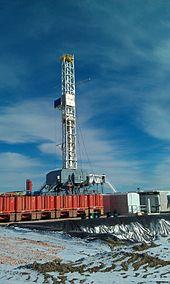Introduction
Abu Dhabi National Oil Company (ADNOC) is the largest oil company in the United Arab Emirates (Bahgat, 2013). This state owned company was founded in 1971 by the government of Abu Dhabi. The company experienced massive growth in the 1980s and 1990s due to large oil reserves in this region. According to the report by Bahgat (2013), the firm is currently ranked fourth largest oil company in the world, and the largest corporation in the United Arab Emirates. In order to manage the workload, the management of this firm established 14 subsidiary companies working in different areas, from the production process to logistics and marketing. In this paper, the researcher seeks to conduct an audit in order to determine the nature of leadership, people, and partners of this firm, processes and infrastructure, and the organizational culture that has helped it achieve its current success.
Evaluation of People and Partners at ADNOC
ADNOC is a state owned company that is operated as a department within the government. Although the government has avoided any direct involvement into its operations, the top management unit of this firm is answerable to the government of Abu Dhabi. This explains why the chairperson of this company is Sheikh Khalifa bin Zayed who is the ruler of the United Arab Emirates. It is important to note that this position is ceremonial because he does not engage directly in the normal operations of the firm. However, his position at this firm clearly shows the government’s interest in this company. He gets regular briefing about strategic issues affecting the firm or major decisions that the firm plans to make. According to Hults, Thurber and Vic (2011), when the top management unit of this firm has plans to form partnership with external stakeholders, the ruler has to be consulted as the chairperson of this organisation. Other key people at this firm include Mr. Abdul Munim Al-Kindy who is the chief executive officer of the firm.
The management of this firm has been keen on identifying partners who can help it push its agenda in the international market. According to Mohamed (2013), ADNOC has formed strategic partnership with oil marketers in the international markets to help in promoting its brand and products in the market. For instance, Delta is one of its main partners in the emerging markets in Africa. Some of these strategic partners also act as the distributors of this firm’s products in the market. This has helped ADNOC to achieve success in this industry. By delegating some of its functions to these partners, it becomes easy to concentrate on the extraction of the products. The marketing and logistical functions are delegated to these partners.
Analysis of Processes and Infrastructure
According to Bahgat (2013), in the current competitive market, firms are keen on improving their processes in order to ensure that they deliver quality products to their clients. The management of ADNOC has been keen on ensuring that its processes are within the international standards in order to compete favourably with international players in the global oil market. This means that its infrastructure must be based on the emerging technologies in order to achieve efficiency and reliability. Such a large firm cannot withstand any form of disruption in the form of a major infrastructural breakdown because the consequences can be overwhelming. In order to determine some of the processes at this firm and infrastructural needs, it is important to understand its major areas of operations.
The first stage in the production of petroleum products is the exploration process. The management of this company has invested heavily in the infrastructural development of the exploration equipment. Oil exploration is a complex process that needs some of the state-of-the-art technologies in order to identify the oil fields. ADNOC has been keen on advancing its exploration to the high seas, and this requires the right machines. According to Mohamed (2013), ADNOC has invested heavily in purchasing new drilling rigs and other equipment that is used in oil exploration. The figure below shows one of the drilling rigs at work.

After the exploration, the next important stage is oil extraction process. According to Kratschmer (2011), extraction of requires heavy infrastructural investment. This firm has been using its subsidiary firms in the extraction process. These subsidiaries operate semi-autonomously. These subsidiaries are responsible for the purchase of all the infrastructural equipment needed at the exploration plant. The following figure shows some of the equipments used at the extraction sites. National Drilling Company is one of the largest subsidiaries of ADNOC that is responsible for the extraction of oil (Mohamed, 2013).

This subsidiary coordinates closely with other ADNOC subsidiaries to ensure that the process is done efficiently to meet the international demands.
The next important process in this system is the processing of gas and oil. According to Mohamed (2013), ADNOC exports a substantial amount of its products as crude oil. However, it has large processing plants that are used in refining oil destined to some selected international markets. The products sold in the domestic markets are also refined at this plant. In order to improve efficiency in this process, the management has developed subsidiary firms that are wholly responsible for the process of refining the products. Abu Dhabi Oil Refining Company closely coordinates with three other subsidiaries to ensure that processing of the petroleum products is done effectively (Kratschmer, 2011).
Transportation of the products to the local and international markets is one of the most challenging tasks for most of the oil companies around the world. According to Mohamed (2013), transportation of oil products is not only expensive, but also poses serious hazards in case of accidents. The recent BP oil spillage at the high seas is a clear demonstration of how delicate and expensive this process can be in case of an accident. For all the maritime transportation of ADNOC products, Abu Dhabi National Tanker Company is the main subsidiary that is responsible (Hults, Thurber & Vic, 2011). Fujairah and Jebel Dhanna are the two main terminals used in the exportation of this firm’s products. The company has large tankers to help in the distribution of its products within the local market. Each of the subsidiaries in the value chain has large storage systems used in holding the products before they are moved to the next stage.
Assessment of Organization and Culture
When conducting an audit of an organisation, one of the most important areas that should always give proper emphasis is the organizational culture. According to Kratschmer (2011), organizational culture defines the manner in which people within an organisation interacts, and the values they hold towards different factors within their working environment. At ADNOC, the management unit has been keen on defining a culture that will help it manage the international forces. Given the fact that this firm is operating in the global market, its workforce is highly diversified (Kratschmer, 2011).
However, the management has been forced to define a culture that will define a common behavioural pattern for all the employees. The culture is defined in the values of the firm. As per these values, this firm cherishes creativity and innovativeness among its employees. It also insists on the importance of cultural tolerance and teamwork within the workplace. This tolerance to diversity is seen at the management unit of this firm. Some of the top managers at this firm are non-Muslims, but this has never raised an issue at this firm. The company’s value demands that employees uphold professionalism when handling customers or any other stakeholders related to this firm directly or indirectly.
Evaluation of the Leadership and Governance
Success of an organisation largely depends on the nature of its leadership structure. Khalifa Bin Zayed is the chairperson and the symbolic head at ADNOC. However, all the executive decisions come from Mr. Abdul Munin Al-Kandy who is the chief executive officer (About ADNOC, 2014). He has a board of directors who are heading various departments and subsidiaries of this firm. This board of directors is responsible for the governance of this firm. An analysis of the management structure shows serious weaknesses in terms of to gender equity. All the nine vice presidents who form the top decision making unit are men. According to Mohamed (2013), many firms in the United Arab Emirates are yet to allow women into the top management unit. This claim is confirm by the composition of top managers at this firm. However, the firm has been keen on attracting expertise from the international community. Mr. David Westerman who serves as the senior vice president in corporate affairs is a Briton (About ADNOC, 2014).
In formulation of policies, the management unit has been very effective because of the strategy that allows participation of junior managers. Junior managers at this firm are allowed to come up with policies that are relevant to their areas of jurisdiction. The mid managers are then expected to harmonize the management decisions from various junior managers serving under then before compiling a report for the top management unit. The decision made by the top management unit is always based on the reports they receive from the mid-managers (Bahgat, 2013). This firm has remained flexible to the emerging environmental forces, especially the new technology. This is a clear demonstration that the management is accommodative of such new forces.
Conclusion
From the above audit on ADNOC, it is clear that this company has well-established structures and systems that have enabled it achieve success in the market. Its leadership is flexible enough to accommodate the changing environmental forces, although it is not gender-balanced. The government- as the owner of the company- has avoided any direct influence that may affect its successful operations in the market. This has allowed the firm to form partnership with various entities in the global market in order to sustain its expansion programmes. The accommodative organizational culture defined in the company’s values has enabled the firm to work in the global market without suffering from the consequences of cultural conflict in the workplace.
References
About ADNOC. (2014). Web.
Bahgat, G. (2013). Alternative energy in the Middle East. Basingstoke: Palgrave Macmillan.
Hults, D. R., Thurber, M. C., & Victor, David G. (2011). Oil and Governance. Cambridge: University Press.
Kratschmer, P. (2011). Organisational culture is highly resistant to change. München: GRIN Verlag GmbH.
Mohamed, N. S. (2013). Technological Change and Skill Development in Arab Gulf Countries. Cham: Springer.